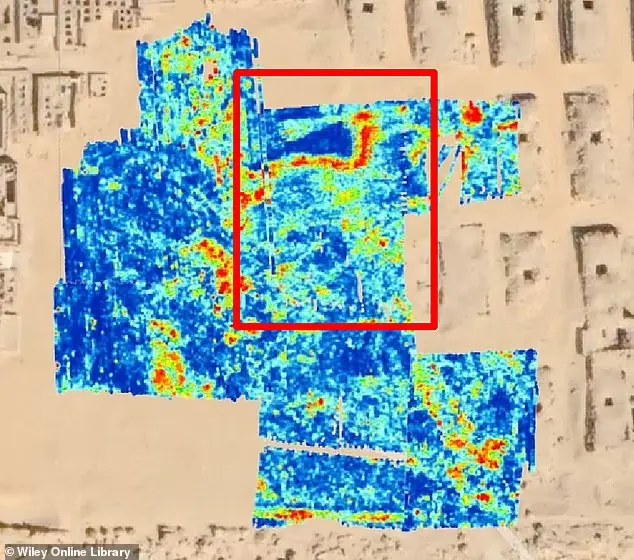Curious L-Shaped Structure Found near Giza Pyramids is 4,500-Years-Old
Archaeologists have discovered mysterious structures hidden below the surface near Egypt’s Great Pyramid that could be an unknown tomb built 4,500 years ago.
The team used ground-penetrating radar on Giza’s Western Cemetery, uncovering an L-shaped anomaly that appeared as an entranceway to a chamber below.

The burial ground holds the remains of King Khufu, who commissioned the iconic pyramid, his family members and high-ranking officials, suggesting another elite could be hiding beneath the sands.
The L-shaped structure is up to six feet below the surface and filled with sand, which researchers speculated was intentionally done after it was constructed to block the entrance to the ‘chamber’ nearly 30 more feet below.
‘The structure causing the anomalies could be vertical walls of limestone or shafts leading to a tomb structure,’ the researchers shared in the study.
However, they noted that a further investigation will be necessary to determine its true identity.


In addition to radar, the team also used a technique called electrical resistivity tomography (ERT) that maps geologic variations.
The structures were discovered in a ‘blank area’ with no visible structures and mostly flat ground with compacted sand on the surface.
Using the scanners, the team determined the L-shaped feature is about 32 feet long and about 49 feet wide.
And the second structure measures 32 feet all around, which could be a mix of sand and gravel or even an open void.
Researchers have speculated that the structure could be a mastaba, an underground rectangular tomb with a flat roof typically constructed of limestone or mudbricks.
‘It has a vertical shaft connected to a subsurface chamber,’ the study reads.
‘Most such sites are buried under overburden sand, and it is not easy to locate their exact positions from the surface.
‘Under such conditions, their positions can be identified by the shallow geophysical exploration methods.’
Study first author Motoyuki Sato, a professor in the Center for Northeast Asian Studies at Tohoku University in Japan, told Live Science that he and his team are sure the structures are not natural phenomenon because the ‘shape is too sharp.’
The Great Pyramid stands more than 480 feet tall with the length of each side of the base measuring about 755 feet, making it the largest man-made structure on Earth.
The two smaller pyramids were constructed later – one built for Khafre, the fourth of the eight kings of the 4th dynasty, and the other for Menkaure, the fifth king of the 4th dynasty.
Khufu was the second king of the 4th dynasty.
And the ancient Egyptian pyramids are still revealing new secrets.

In March 2023, scientists discovered hidden corridor buried deep inside the Great Pyramid using an endoscopic camera and a technique called cosmic-ray muon radiography.
The team mapped the opening, confirming it was 30 feet long and seven feet wide.
It wa below, or on another as yet undiscovered chamber or space, according to Mostafa Waziri, head of Egypt’s Supreme Council of Antiquities.
Five rooms atop the king’s burial chamber in another part of the pyramid are also thought to have been built to redistribute the weight of the massive structure.
It was possible the pharaoh had more than one burial chamber, Waziri added.



